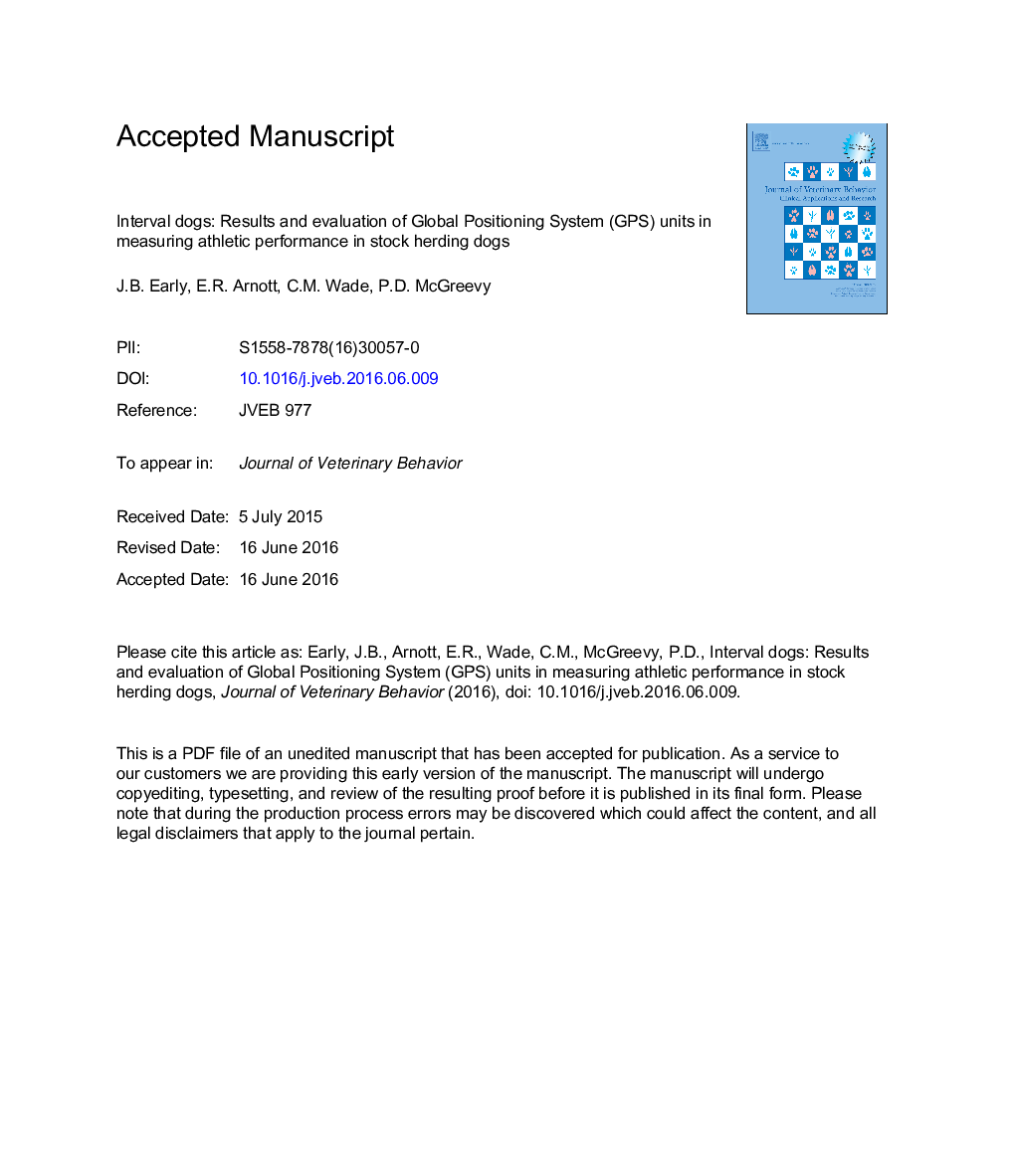| Article ID | Journal | Published Year | Pages | File Type |
|---|---|---|---|---|
| 8484246 | Journal of Veterinary Behavior: Clinical Applications and Research | 2016 | 13 Pages |
Abstract
The skilled movement of livestock by dogs is highly valued among livestock handlers in the harsh farming environment of Australia. However, their workload has not been studied empirically. This pilot study aimed to measure the distance, speed, and heart rate of a group of sheep dogs (n = 6) working during an 11-day period of peak activity (shearing). In addition, it sought to determine the technological capabilities and limits of a modern Global Positioning System (GPS) device for monitoring working dogs during peak work. Distances recorded ranged from 1.7 km up to 68.3 km in a day. The furthest cumulative distance covered by a dog during the study period was 279.2 km. The maximum speed recorded in the yard area was 37.01 km/h. Because of the limitations of the equipment and the nature of the work, we were unable to measure heart rate reliably. The GPS units used in the study were effective at measuring the considerable variation in movement and speed of the dogs while working. However, battery life limitations prevented recording of the dogs' full activity over each day. Characterizing elite and peak performance in these working dogs may assist in comparisons with other sporting and working breeds and in identifying phenotypic traits of value in herding and related working contexts.
Related Topics
Life Sciences
Agricultural and Biological Sciences
Animal Science and Zoology
Authors
Jonathan B. Early, Elizabeth R. Arnott, Claire M. Wade, Paul D. McGreevy,
